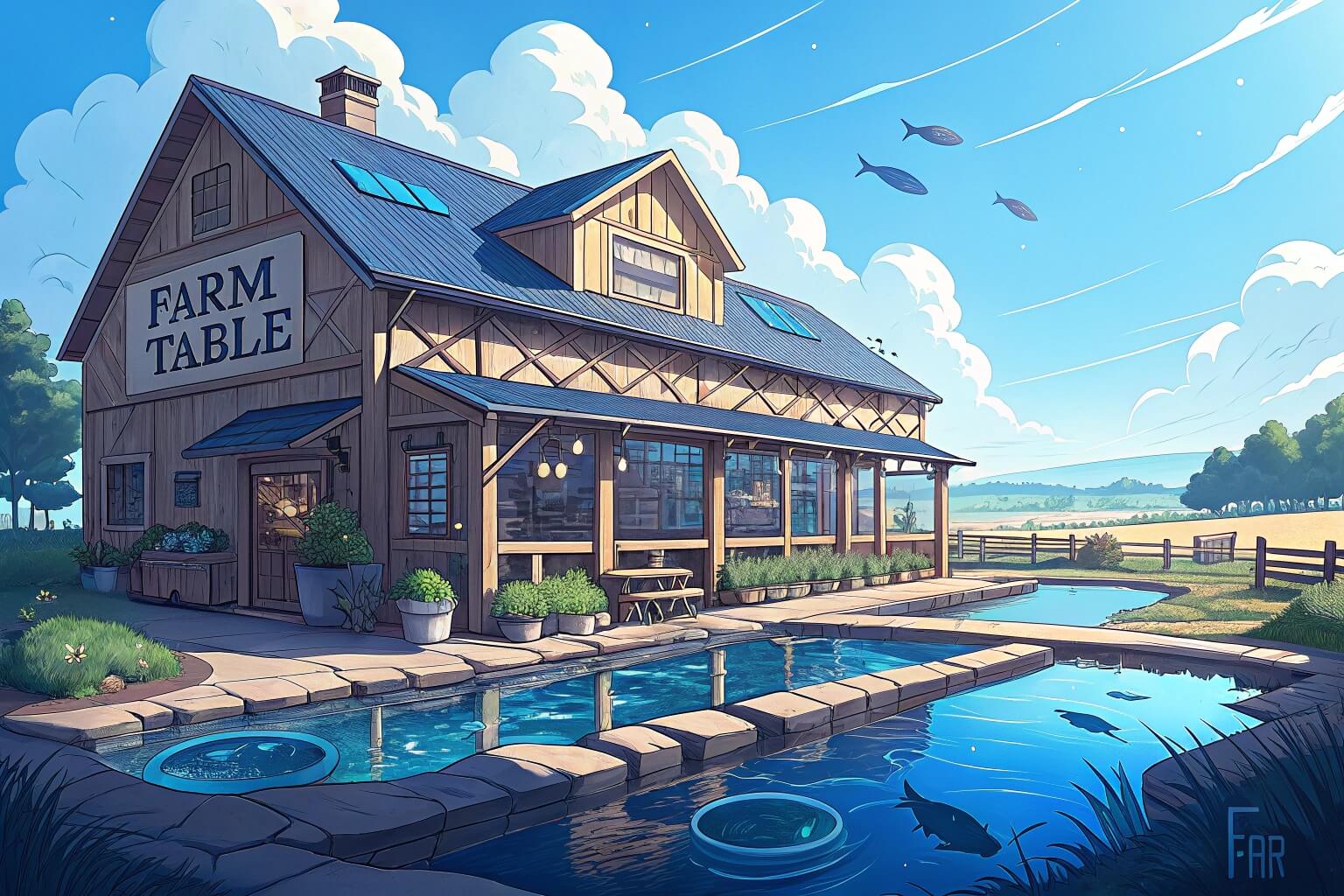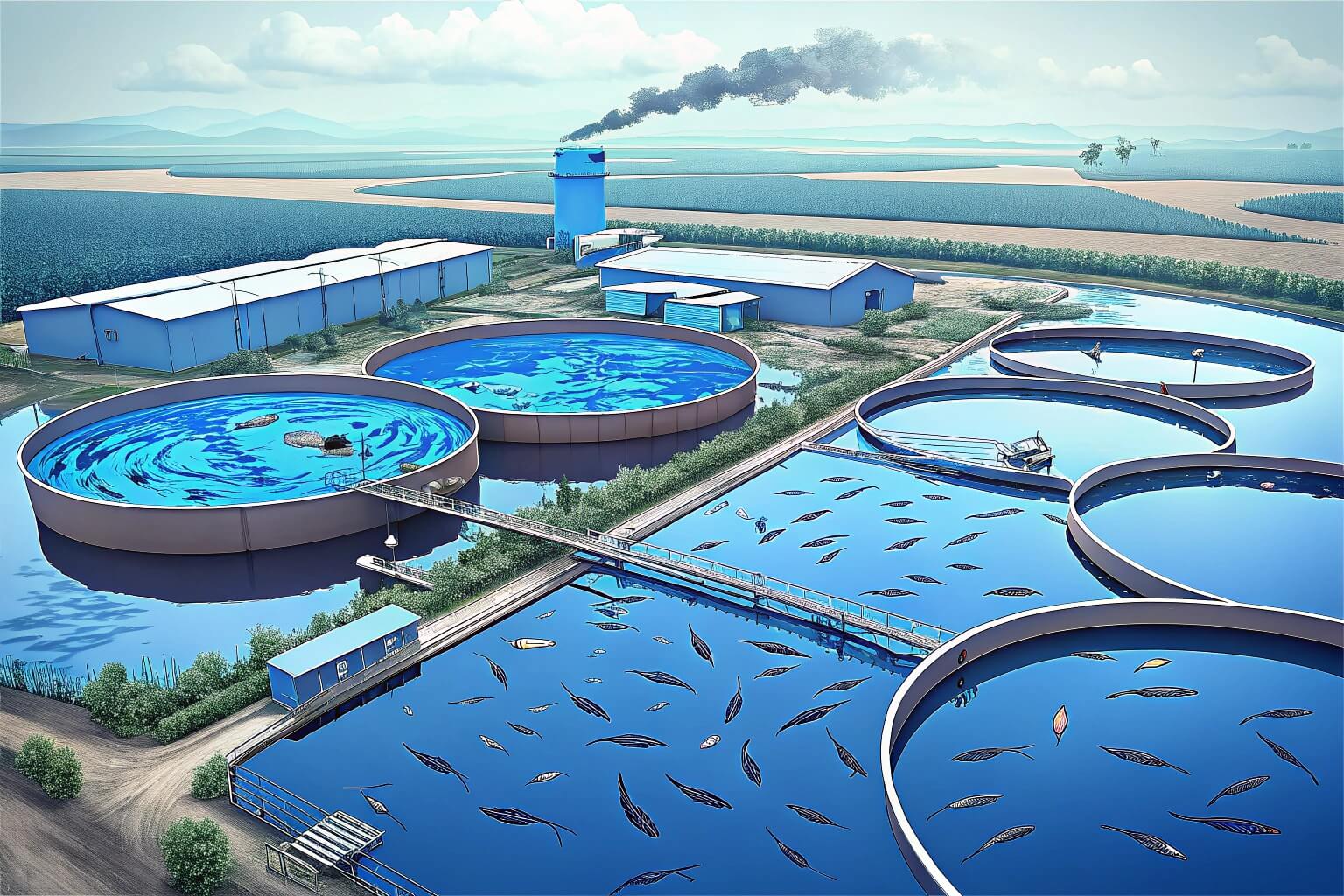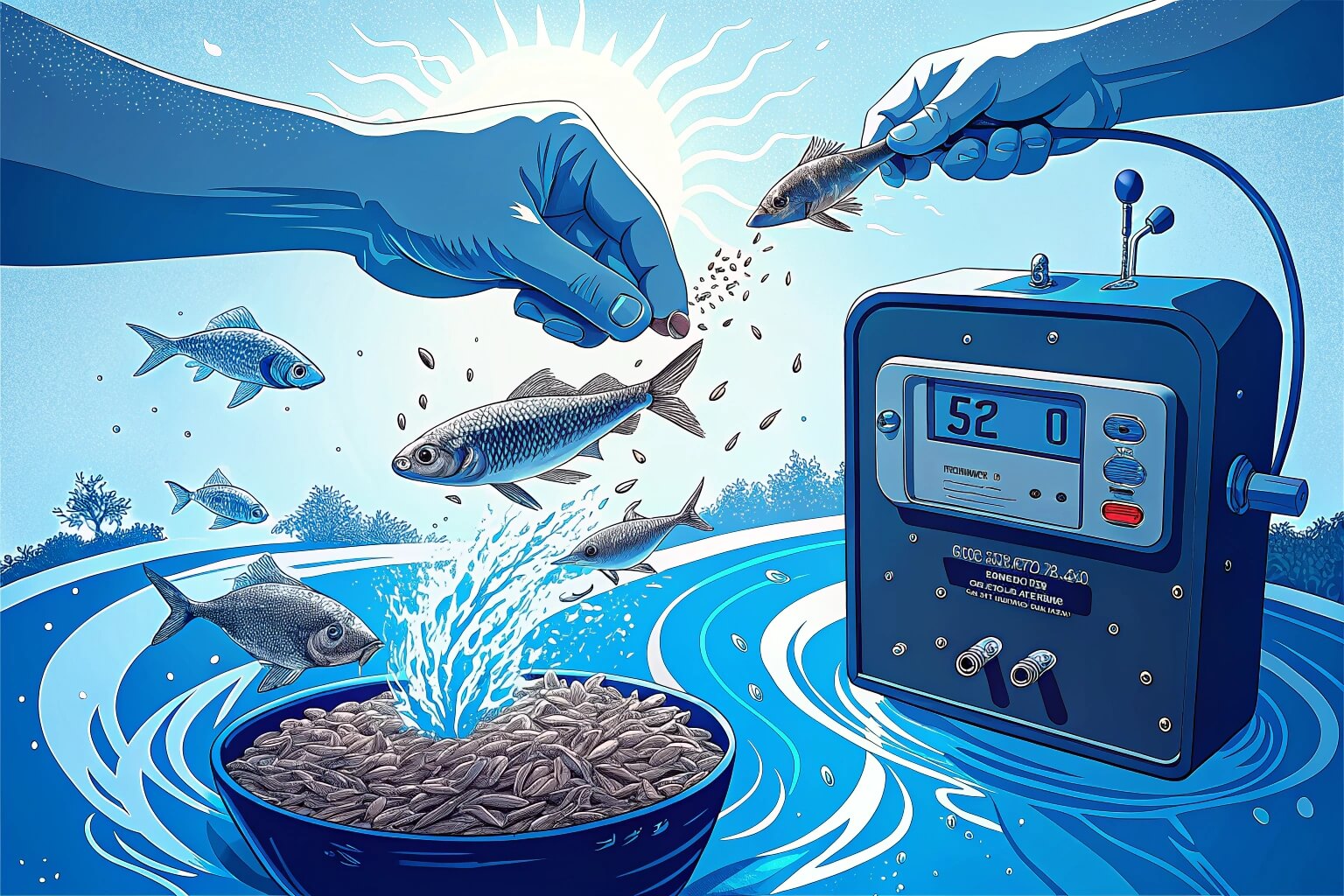How to run a restaurant with my fish farm?
Thinking about serving fish straight from your farm to the table? It sounds great, but combining aquaculture and hospitality is complex. Let’s dive in.
Running a restaurant with your fish farm involves integrating two distinct businesses. Success depends on navigating regulations, managing farm operations efficiently, controlling restaurant costs, and creating a unique farm-to-table experience that attracts customers.

It's a model I'm passionate about, blending sustainability with fresh food. But before jumping in, it's crucial to understand the specific challenges and opportunities. Let's break down the key questions you need to consider.
Can you open a restaurant on your farm?
Zoning laws blocking your farm restaurant dream? It's a common hurdle, turning excitement into frustration before you even start planning the menu.
Yes, you often can open a restaurant on your farm, but it heavily depends on local zoning ordinances, land-use regulations, and obtaining the necessary health and business permits. Thorough research and planning are essential first steps.

Opening a restaurant directly on your farm property involves more than just setting up tables. You're essentially merging agricultural land use with commercial hospitality, which brings specific regulatory hurdles. I’ve learned that navigating this requires careful attention to local rules.
Understanding Zoning and Permits
First, you absolutely must check your local zoning laws1. Agricultural zones often have restrictions on commercial activities. You might need to apply for a zoning variance or a special use permit, which can be a lengthy and sometimes uncertain process. Planners will consider things like traffic impact, noise levels, and compatibility with the surrounding area. Then come the health department permits2 – they have strict requirements for food preparation, storage, sanitation, water supply, and waste disposal. You'll likely need separate permits for the farm and the restaurant operations, even if they are on the same property. Environmental permits related to water discharge from both the farm and restaurant might also be required. It's best to talk directly with your local planning, zoning, and health departments early on.
Infrastructure and Logistics Considerations
Beyond permits, think about the practical side. Does your farm have adequate infrastructure? You'll need reliable access to potable water (tested regularly), sufficient electricity for kitchen equipment and lighting, and proper wastewater and sewage treatment systems that meet commercial standards. Customer accessibility is key: Is there safe road access? Do you have enough parking space? You'll also need designated areas for receiving deliveries, storing food (both refrigerated and dry goods, separate from farm supplies), preparing food, dining, and restrooms compliant with accessibility standards (like the ADA in the US). Waste management is another big one – you’ll generate food waste, packaging waste, and general trash, which needs regular and sanitary removal, potentially separate from farm waste streams.
Is a fish restaurant profitable?
Dreaming of a packed restaurant serving your farm-fresh fish? High hopes can crash against the reality of slim margins and intense competition.
A fish restaurant can certainly be profitable, especially with a unique selling point like farm-fresh fish. Success hinges on excellent food quality, strong cost management, consistent customer traffic, and effective marketing.

Running any restaurant is tough, and fish restaurants have their own specific challenges and opportunities. Profitability isn't guaranteed, but combining it with a farm offers unique advantages if managed well. From my experience exploring this model, controlling costs while highlighting freshness is key.
Key Factors Driving Restaurant Profitability
Several elements contribute to a fish restaurant's bottom line. Menu Pricing and Food Cost3: Fish can be expensive, so accurate menu pricing is crucial. You need to balance customer value perception with covering your costs (aiming for a food cost percentage typically between 25-35%). Your farm connection can potentially lower some ingredient costs, but you still need to factor in farm operating expenses. Volume and Turnover: You need enough customers consistently. Location, ambiance, marketing, and reputation all play a role. A farm location might be scenic but could limit foot traffic compared to a high-street spot. Labor Costs: Skilled kitchen and front-of-house staff are essential but expensive. Efficient scheduling and training are vital. Overhead: Rent (or property costs if owned), utilities, insurance, licenses, and marketing all add up.
Managing Costs in a Farm-to-Table Model
The farm-to-table4 angle is your biggest asset but needs careful management. Inventory Control: Minimize waste by accurately predicting demand and using as much of the fish as possible. Creative menu planning helps use off-cuts or less popular parts. Your direct supply could mean fresher product with less spoilage if managed tightly. Direct Sourcing Advantage5: Supplying your own fish can stabilize costs for that key ingredient, protecting you somewhat from market price fluctuations. However, you must accurately track the cost of raising those fish. Marketing the Story: Leverage the "pond-to-plate" narrative. Customers often pay a premium for transparency, sustainability, and freshness. Offer farm tours (if feasible and safe) or highlight the farm connection in your decor and menu descriptions. This unique selling proposition (USP) can justify slightly higher prices and build loyalty.
Is owning a fish farm profitable?
Thinking fish farming is a guaranteed path to profit? Be aware: fluctuating market prices, disease risks, and high operational costs can quickly challenge that idea.
Yes, owning a fish farm can be profitable, but it requires significant expertise, careful planning, and efficient management. Profitability depends heavily on factors like species choice, scale, market demand, and controlling operational costs.

Fish farming, or aquaculture, is a complex agricultural venture. I've seen firsthand that success isn't just about growing fish; it's about running a lean, efficient operation that meets market needs. While providing for your own restaurant is one outlet, the farm needs to be viable on its own.
Variables Affecting Fish Farm Profitability
Many factors influence whether a fish farm makes money. Species Selection6: Different fish have different growth rates, feed requirements, disease resistance, and market values. Researching species suited to your climate and market demand is critical. Tilapia, catfish, trout, and shrimp are common choices, each with pros and cons. Feed Costs7: Feed is often the single largest operating expense, sometimes accounting for over 50% of costs. Efficient feeding strategies and sourcing quality feed at good prices are vital. Water Quality Management8: Maintaining optimal water parameters (oxygen, pH, ammonia levels) is crucial for fish health and growth. This requires monitoring and potentially costly filtration and aeration systems. Disease prevention and treatment are also significant potential costs. Survival Rates: High mortality rates due to disease, predators, or poor conditions can devastate profits.
Scaling and Market Access
The size of your operation matters. Economies of Scale: Larger farms often have lower per-unit production costs. However, starting large requires more initial capital and carries higher risk. Small farms can be profitable, especially if targeting niche markets or direct sales (like to your own restaurant). Market Demand and Pricing: Fish prices fluctuate based on supply, demand, and imports. You need reliable buyers. Supplying your own restaurant provides a guaranteed outlet for some product, but you'll likely need other channels (local markets, wholesalers, other restaurants) to sell excess inventory, especially if the farm produces more than the restaurant can use. Using durable, efficient equipment like Bancy's galvanized or collapsible fish tanks can help manage infrastructure costs and ensure a reliable environment for the fish, contributing to better survival rates and potentially higher profits.
How much does it cost to run a fish farm?
Ready to dive into fish farming? Hidden setup costs and surprisingly high daily expenses can quickly drain your budget if you're not prepared.
The cost to run a fish farm varies greatly based on scale, system type (e.g., ponds, raceways, tanks), fish species, and location. Major ongoing expenses include feed, energy (electricity for pumps/aerators), labor, water treatment, and maintenance.

Understanding the financial commitment is crucial before starting. From my research and conversations within the industry, costs span a wide range, but some core components are always present. You need to budget for both the initial setup and the continuous operation.
Breakdown of Operational Expenses
Ongoing costs are the lifeblood of the farm. Feed: As mentioned, this is typically the largest cost. Budget carefully based on your chosen species' feed conversion ratio (FCR). Energy: Pumps, aerators, heaters, or chillers consume significant electricity. Energy-efficient equipment9 can save money long-term. Labor: Costs depend on farm size and automation level. Tasks include feeding, monitoring water quality, health checks, harvesting, and maintenance. Water & Treatment: Costs for sourcing water (if not naturally available) and treating effluent to meet environmental regulations. Supplies & Maintenance: Nets, testing kits, medications, spare parts for pumps/filters, and general repairs add up. Using reliable tanks, like Bancy's collapsible PVC or sturdy galvanized sheet/pipe tanks, can impact maintenance needs and longevity.
Initial Investment vs. Ongoing Costs
Getting started requires significant capital, separate from the daily running costs.
| Cost Category | Examples | Type | Notes |
|---|---|---|---|
| Land & Site Prep | Purchase/lease, excavation, grading | Initial | Varies hugely by location |
| Containment System | Ponds, raceways, tanks (e.g., Bancy galvanized, collapsible) | Initial | A major upfront cost; type depends on species & scale |
| Water System | Pumps, pipes, filtration, aeration, UV sterilizers | Initial | Essential for water quality |
| Fish Stock (Fingerlings) | Initial purchase of young fish | Initial | Cost depends on species and quantity |
| Equipment | Nets, feeders, monitoring tools, transport tanks, processing equipment | Initial | Quality tools improve efficiency |
| Permits & Licenses | Fees for various permits (water use, discharge, business) | Initial/Ongoing | Can be complex and recurring |
| Feed | Pellets, specialized diets | Ongoing | Often the largest recurring expense |
| Energy | Electricity for pumps, aerators, lighting, heating/cooling | Ongoing | Significant, especially for intensive systems |
| Labor | Salaries/wages for farm staff | Ongoing | Increases with farm size |
| Maintenance | Repairs, parts replacement, system upkeep | Ongoing | Budget for unexpected breakdowns |
| Health Management10 | Medications, veterinarian visits, water testing chemicals | Ongoing | Crucial for preventing losses |
Understanding both the upfront investment and the continuous operational budget is essential for planning a financially sustainable fish farm, whether it's supplying your restaurant or other markets.
Conclusion
Combining a fish farm and restaurant offers a unique "pond-to-plate" appeal. Success demands navigating regulations, mastering both aquaculture and hospitality, controlling costs tightly, and effectively marketing your fresh, sustainable story.
-
Understanding zoning laws is crucial for compliance and successful operation. Explore this link to ensure you're informed about local regulations. ↩
-
Health department permits are essential for food safety. This resource will guide you through the necessary permits and regulations. ↩
-
Understanding menu pricing strategies can help optimize profitability and customer satisfaction in your fish restaurant. ↩
-
Exploring the farm-to-table model can reveal how it enhances freshness and sustainability, crucial for fish restaurants. ↩
-
Learning about direct sourcing can help stabilize ingredient costs and improve quality, essential for fish restaurants. ↩
-
Understanding species selection is crucial for maximizing profitability in fish farming. Explore this link to learn about the best options for your farm. ↩
-
Feed costs are a major expense in aquaculture. Discover strategies to minimize these costs and improve your farm's bottom line. ↩
-
Maintaining optimal water quality is essential for fish health. Learn best practices to ensure a thriving aquaculture operation. ↩
-
Discover how investing in energy-efficient equipment can significantly reduce operational costs and enhance sustainability in fish farming. ↩
-
Effective health management is crucial for preventing losses and ensuring a thriving aquaculture operation. Learn more about best practices here. ↩